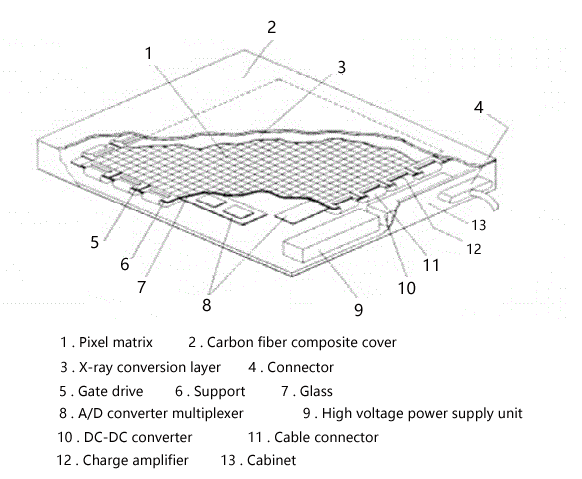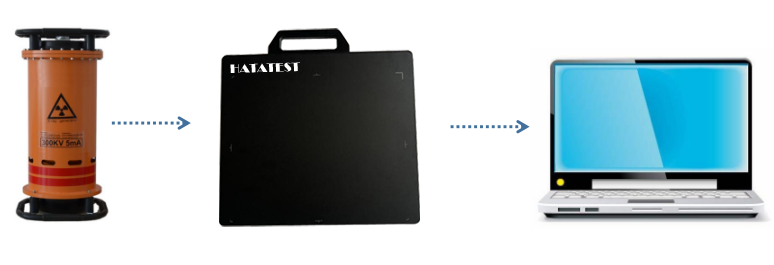Compared with the screen/chip system and the CR system, the core component of the DR system is a flat panel detector, which is a detector that directly converts X-ray energy into an electrical signal to generate an X-ray image. DR flat panel detection technology is known as one of the most important technological breakthroughs in the history of radiology.
According to the detector technology (X-ray conversion method), it can be mainly divided into the following three types.
Direct flat panel detection technology (amorphous selenium)
Indirect flat panel detection technology (amorphous selenium + cesium iodide)
Charge coupled device detector, CCD conversion flat panel detector (X-ray scintillator + CCD diode display)
The main structure of the direct flat panel detection technology consists of an amorphous selenium layer plus a thin film transistor display, which converts the X-ray energy directly into a digital signal.

1. X-ray conversion unit
The use of amorphous selenium as a photovoltaic material converts X-rays into electrical signals. When the X-ray illuminates the amorphous selenium layer, the incident X-ray photons generate electron-hole pairs in the selenium layer and form a current.
2. Pixel matrix (detector element array)
An array of millions of detector elements is assembled on a glass substrate using thin film transistor technology, each detector comprising a capacitor and a TFT, and corresponding to one pixel of the image.
Each pixel of the TFT has a charge receiving electrode, a signal storage capacitor and a signal transmitter, and is connected to the scanning circuit through the data network line. Finally, the digital signal is read by the readout circuit and restored to an image.
-
 Sales@hata-ndt.com
Sales@hata-ndt.com -
 0086-0371-86172891
0086-0371-86172891










